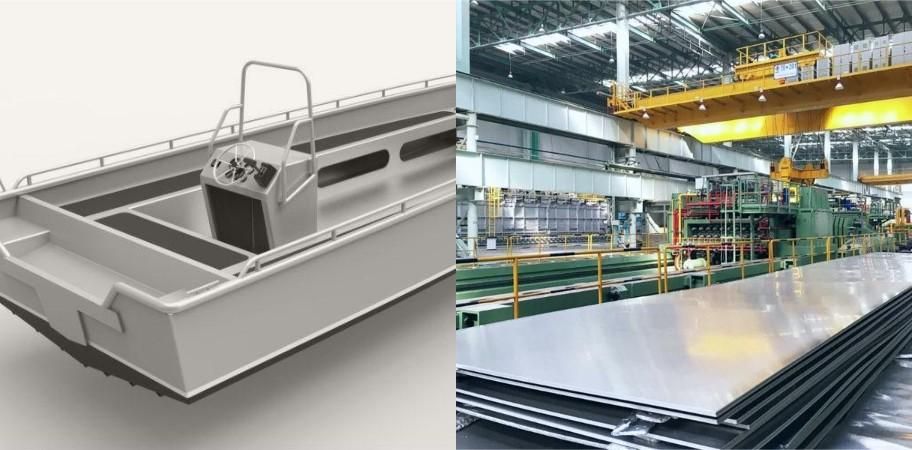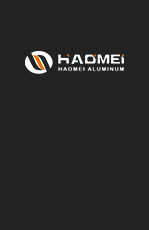What Thickness Aluminum For Boat Hull?
When designing aluminum hulls, boat designers and engineers face a core and unavoidable question: what thickness aluminum for boat hull be? This not only affects the boat's structural strength, safety, and service life, but also represents a delicate balance between performance and cost. Thickness is more than a simple numerical choice, it's a sophisticated decision that integrates materials science, fluid dynamics, structural mechanics and extensive engineering experience.

The key variable determining aluminum thickness: the complex equation of hull design
1. Vessel Type and Mission:
- High-Speed Craft/Yacht:
Pursuing lightweighting in exchange for speed and fuel efficiency, relatively thin aluminum plate is typically used for the bottom and side plates (typically 4mm to 8mm). However, critical areas (such as the bow, keel, and engine mounts) are significantly thicker (possibly reaching 10mm-15mm or even higher).
- Workboats/Fishing Boats:
Required to withstand more demanding operating environments (such as impact with fish catches and berthing collisions), main structural plating thickness is generally increased (typically 6mm-12mm), with thicker areas such as the bow and bilge.
- Passenger Ferries/Transportation Boats:
Maintaining strength and safety margins while balancing passenger capacity and economy, main structural plating thickness typically ranges from 5mm-10mm.
- Large Specialty Vessels:
These include aluminum coast guard vessels, research vessels, and even small and medium-sized military vessels, which have extremely stringent structural requirements. Main structural plating thickness may start at 8mm, with critical areas (such as the main deck, waterline, and explosion-resistant areas) exceeding 25mm or even thicker.
2. Structural Location and Loads:
- Bottom Plating:
Bears hydrostatic pressure, wave impact, and grounding shock, and is typically one of the thickest areas.
- Side Plating:
Bears water pressure, wave impact, and berthing loads, and is second only to the bottom in thickness.
- Deck plating:
Bears equipment loads, personnel activity, and wave impact. The thickness of aluminum sheet for boat must be determined based on deck level (main deck, superstructure) and load calculations.
- Bulkheads/Frames:
Provide transverse and longitudinal strength. Its plate thickness, along with frame dimensions (profile specifications), forms the hull's "framework."
- Bow/Stern:
Subject to high dynamic loads (especially the bow), it is susceptible to impact and typically requires local reinforcement and thickening.
- Bilge (the transition area between the bottom and the side):
A stress concentration area requiring special attention.
3. Rules and Regulations:
Classification society rules (such as CCS, DNV-GL, ABS, LR, BV, etc.) are the cornerstone of design. These rules use complex formulas to calculate the minimum plate thickness, frame dimensions, and structural layout requirements for each part based on the ship's type, size, and navigation area (inland, coastal, or offshore). Design thicknesses must meet or exceed the calculated values.
4. Material Properties:
The marine grade aluminum alloys(such as 5052, 5083, 5086, 5383, 5456, etc.) directly determines key properties such as yield strength, tensile strength, elongation, and corrosion resistance. Higher-strength aluminum alloys allow for the use of relatively thinner plates (while maintaining stability) under the same design load, thus achieving lightweighting. Furthermore, good corrosion resistance extends service life, indirectly influencing considerations for corrosion allowance.
5. Corrosion Allowance:
Seawater is also corrosive to aluminum alloys (although much less so than steel). The design must consider the expected uniform corrosion and localized corrosion (such as pitting and crevice corrosion) over the entire design life (e.g., 20 or 30 years). A corrosion allowance should be added to the required structural thickness (typically 0.5mm to 1.5mm, depending on protective measures and navigation area).
6. Manufacturing Process and Stability:
Excessively thin aluminum plates are difficult to control deformation during welding, requiring extremely high welder skills. Thin plates are also more susceptible to buckling (wrinkling) under pressure. Therefore, while meeting strength calculation requirements, the plate's inherent stability requirements must also be considered, sometimes leading to a minimum thickness limit (for example, the main structure of a large ship rarely requires less than 4-5mm).
With extensive experience in marine grade aluminum alloys for shipbuilding and offshore engineering, Haomei Aluminum understand that hull plate quality is not just about thickness, but also about the material's inherent quality and service performance. Our marine grade aluminum plates (covering mainstream grades such as 5052, 5059, 5083, 5086, 5383, 5456, and higher strength grades) are designed and manufactured specifically for shipbuilding:
1. Extremely uniform and consistent performance:
- Advanced melting and casting processes (such as online degassing, filtration, and electromagnetic stirring) ensure highly uniform alloy composition and extremely low and controlled levels of impurity elements (such as Fe and Si).
- Strictly adhere to a homogenization heat treatment system to thoroughly eliminate internal stress and segregation in the ingot, laying a foundation for homogeneous properties during subsequent rolling.
- Precision control of rolling temperature, speed, and deformation throughout the entire process ensures ultra-low fluctuations in the final plate's mechanical properties (strength and elongation) across the entire coil, batch, and even between batches. This ensures every plate is reliable.
2. Excellent deep processing performance, unlocking design potential:
- Optimized microstructure control (grain size and texture control) imparts excellent cold forming capabilities to the plate.
- Even under large deformations (such as sharp-angle bending and stamping complex curves), surface peeling and cracking are effectively suppressed, improving processing efficiency and component quality. This allows designers to perfectly realize their vision.
3. Superior corrosion resistance, safeguarding the life of the ship:
- Our core advantage lies in the strict control of key corrosion resistance elements (precisely controlled Mg content and strictly controlled impurities such as Fe/Si/Cu).
- Excellent plate surface quality (controlled oxide film thickness and uniformity).
- Passing rigorous salt spray tests (e.g., no significant pitting after >5000 hours) and actual marine coupon verification, the corrosion resistance significantly exceeds conventional industrial standards. This effectively reduces maintenance costs and extends the safe service life of the vessel.
4. Comprehensive specifications and flexible customization:
- We offer a wide range of products, from thin to thick aluminum plates (e.g., 4mm to 100mm+), meeting the full spectrum of needs, from high-speed boats to large specialized vessels.
- Customized production supports non-standard dimensions, special heat treatment conditions (e.g., H116, H321), and specialized surface requirements (e.g., sandblasting, passivation).
Selecting the thickness aluminum for boat hull is a rigorous science, crucial for the intersection of ship safety, performance and economy. However, simply meeting thickness requirements is far from enough. The plate's inherent quality—its uniformity, stability, advanced processing capabilities, and superior corrosion resistance—is the fundamental guarantee for maintaining structural integrity and safe navigation during a vessel's long and demanding maritime career. Our marine grade aluminum plates utilize materials technology that surpasses standards, infusing every inch of meticulously calculated thickness with reliable vitality. We not only provide standard-compliant plates but also offer reliable voyage guarantees. Choosing us means choosing our unwavering commitment to quality, allowing your vessel design to sail the oceans without worry.








